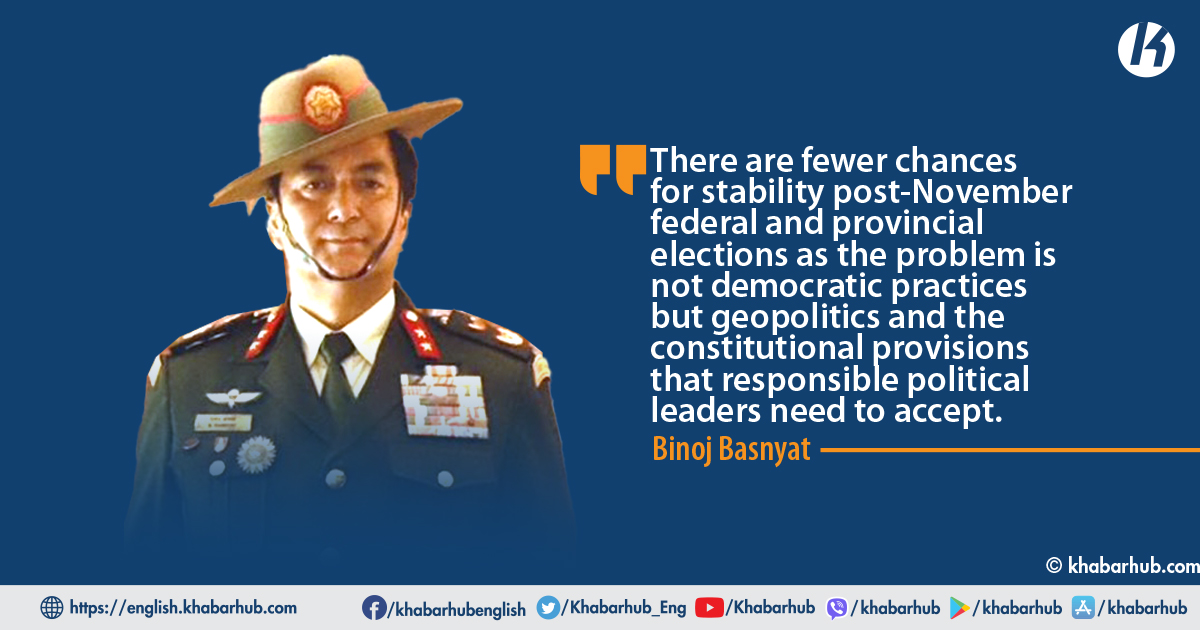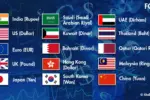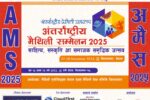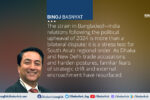The political bodies and the state mechanism are gearing up for the second election after the 2015 promulgation of the constitution in a past political environment but now with diverse ideologies and different alliance partners.
The provincial and federal election being held on 20th November is of great consequence to Nepal as it is to the immediate neighbors, China and India, for stability as well as for shaping the South Asia region.
India with its strides to “Neighborhood First” policy and Bay of Bengal Initiative for Multi-Sectoral Technical and Economic Cooperation as an important intergovernmental organization to support the “Act East” policy, when China is using South Asia as an alternative strategic route to the Indian Ocean creating South Asia as a bridge with China Pakistan Economic Corridor, Trans Himalayan Multi-dimensional Connectivity Network and China Myanmar Economic Corridor.
The Supreme Court acted twice against the Executive in February 2020 and July 2021 when the parliament was reinstated after KP Oli dissolved the body in December 2020 and May 2021.
The present-day five-party coalition government with Nepali Congress (NC), Nepal Communist Party (Maoists Centre) (NCPMC), Communist Party of Nepal (Unified Socialist) a splintered force from Nepal Communist Party,
Geostrategic disengagement plans in the Himalayas are underway with an objective to advance further diplomatic pursuits with India with the nearing of the SCO meeting on the 15th and 16th Sept where Modi and Xi will meet on the sidelines.
United Marxist Leninist (UML), Janata Samajabadi Party and the Rastriya Janamorcha will remain as the electoral government with a commitment to contest the upcoming election under the electoral alliance.
If the May local elections are the benchmark, the NC hopes to emerge as the largest party, with UML coming second and the NCPMC third.
These again are speculation but the fact remains that the outcome of the election will not subside political instability, bring the corrupt to justice, deliver transparent services to the people nor will it address the national and regional challenges paving way for big powers (China, India and the US) to be more concerned than it is at present.
Geopolitical Observations
China has been effective in Nepal’s political decisions mainly with two concerns one is the geopolitical theory under the Himalayas with strategic connectivity and two, keeping in check US and Allies assistance as well as influence aimed against China.
China’s main interest in Nepal has always been led by its concerns over Tibet and increased its diplomatic maneuvering with the focus on economic ties, and trade that has quadrupled since 2003 and is the largest source of Foreign Direct Investments.
Nepal, on the other hand, has always looked at either China or India, whichever it considers crucial for its survival, given its land-locked position between the two Asian powers.
Maintaining a balancing relationship with China and India remains Nepal’s key and critical component of its Foreign Policy.
The political relationship between the NCP and the Chinese Communist Party (CCP) that began on September 2019, further strengthened as a brotherly relationship with the signing of six MoU between the NCP International Department and the CCP’s International Liaison department’s director Song Tao in the presence of PM Oli and NCP Co-Chairman Puspa Kamal Dahal.
Both the communist forces articulated commitment to “One China Policy” and Xi Jinping’s thoughts on socialism with Chinese characteristics for a New Era have conversed but some argue it was to indoctrinate Xi’s thoughts and ideology. In an attempt to bring together the communist forces in May 2018 the two countries did not succeed and fragmented in 2021 March.
Liu Jianchao, the new head of the International Liaison Department of the CCP’s July visit is a continuance of political engagements. Liu assured that foreign policy will not be dictated by ideology.
Initiating an alliance amongst the communist forces will be of relevance at the same time engagement with the democratic forces with the nearing of the federal and provincial elections.
The visit is on five facets one, developing personal rapport, associates, and association with influential leaders and reiterating China’s security suspicion and reminding of the likelihood of activities aimed against China’s interest, particularly after the US Under Secretary Uzra Zeya, who is the special coordinator for Tibetan issues to two Tibetan camps in May.
Three, to reinitiate diplomatic engagement with the democratic forces particularly with the NC that is chairing the administration, four, to re-initiate unity or an alliance amongst the left parties for the upcoming election, and lastly, to reiterate China’s interest and activities aimed against China’s interest.
Chairman of the Standing Committee of the National People’s Congress, the Chinese Speaker Li Zhanshu who started his official visit on 7th to 17th Sept paid an official visit from 12th to 15th Sept after attending the Eastern Economic Forum held in Russia with a stop-over in Mongolia and South Korea.
Li is no three in the Politburo Standing Committee of the CCP, China’s top policy decision-making body as of March 2018.
This is a follow-up visit after 2019 President Xi’s visit to Nepal, which holds geopolitical and geostrategic bearings. Geopolitical because this is part of the effort to narrate to the world the democratic functioning of the Chinese political system.
Two, Chinese development strides and the new model of BRI as a model and lastly, diplomatic maneuvering is a worldwide determination.
And not to the surprise, the diplomatic outcome from emergent rivalries has made it almost unmanageable for great powers China, India and the US to work together on Nepal’s challenges, though it still is in their interests to do so.
Geostrategic disengagement plans in the Himalayas are underway with an objective to advance further diplomatic pursuits with India with the nearing of the SCO meeting on the 15th and 16th Sept where Modi and Xi will meet on the sidelines.
All aimed at isolating the US engagement, particularly in South Asia. Two, the Central sub-region of the Himalayas is important for China’s engagement in South Asia.
Nepal will play vital as public opinion is in favor, unstable political order is encouraging and institutional corruption is at its peak creating a conducive environment for the upcoming elections.
The visit comes at a critical juncture in Nepali and world politics and is significant for domestic Nepali politics, Nepal-Sino bilateral relations and global geopolitics.
The new journey in altering geopolitical settings with an old relationship commenced in 2015 with the phrase “New Nepal” used to a greater extent all through the decisions making constitutional process for Nepal’s transformation into a Republic, a Secular state and a federal system.
India is the largest trading partner and of utmost importance, in the areas of trade and transit though China has granted sea and land ports for third-country trade. More than 150 Indian ventures are in operation accounting for over 30 percent of the total FDI.
Three subjects of magnitude pointing to the future of the bilateral relationship are notable.
The first is India’s eye on China’s growing influence, which is believed to be supported by the communist parties of both Nepal and China as well as a widening affinity and growing relationship between various political forces and stakeholders.
Second, is the important example of the people-to-people relationship, cultural and traditional practices that form the foundation of the special Nepal-India bond.
The third is the extra-regional powers’ political activities and economic dealings that hamper and contradict Nepal and India’s traditional ties. Also visible are the effects of the new geopolitical realities on Nepal and India’s relationship.
But that is not a whole lot of things, these geopolitical risks are colliding with complex new challenges central to the contemporary era, such as meeting the UN Sustainable Development Goals, climate change and the fall out of the pandemics.
The upcoming election will guide the political forces in power in Nepal on how they are going to deal both politically and diplomatically with friendly nations.
On the domestic front political instability, the institutionalization of corruption, a system of governance benefitting the few, and inflation are some of the greatest challenges.
And not to the surprise, the diplomatic outcome from emergent rivalries has made it almost unmanageable for great powers China, India and the US to work together on Nepal’s challenges, though it still is in their interests to do so.
Deduction
The upcoming election is not only important for Nepal but also to divisional friends, particularly to neighboring countries China and India.
So, the political forces particularly the left and the CCP would think alike and align naturally and ideologically. So, they being aligned together would assist communism philosophy.
As confusing in the local election, the five parties in the ruling coalition have decided to contest elections under an electoral alliance to keep the UML in check, which emerged as the largest party in the 2017 elections and is looked upon as closer to China.
This raises a big question if elections are merely a tool to remain in power? The NCPMC on the other hand is also exhausting the NC democratic credential to exist as a political force.
NCPMC’s influential leaders are open to collaborating with the UML and others left anytime now or post-election. But neither the five-party alliance, UML, Pro-Monarchy (RPP) nor other political parties contesting the elections have an electoral manifesto, national programs and declarations.
The left occupies an of great consequence in Nepal’s politics with nationalism or even ultra-nationalism mainly aimed against India’s interference in domestic political affairs.
In 2015 then PM KP Oli projected China as an alternative to India’s dependence on strategic infrastructure and use of ports from third countries.
The President also with a UML background stressed the importance of the Belt and Road Initiative. The Himalayas through accessibility still remains a challenge for the smooth flow of goods from third countries.
The unity of the ultra-left NCPMC and the moderate left UML unity would have dominated Nepal’s politics for decades to come with China as the core colleague.
Secondly, Nepal elections ought not anymore to be an actor or be part of the big power competition or contested for other power’s behest.
There are fewer chances for stability post-November federal and provincial elections as the problem is not democratic practices but geopolitics and the constitutional provisions that responsible political leaders need to accept.
Lack of understanding of the long game and the realization of past miscalculations have led to the nation misplacing her credibility, her diplomatic trust, political conviction and above all the hopes of the Nepali people. The country has lost many years and many opportunities.
The upcoming election will guide the political forces in power in Nepal on how they are going to deal both politically and diplomatically with friendly nations.
At the same time, political progress will be diligently observed by immediate neighboring China and India who push around for influence as well as the US and the EU who have poured down billions in aid and investment.
Lastly, with added prominence due to China and US rivalry and the unwarranted China and India political competition, economic cooperation and confrontation on the Himalayan borders, Nepal’s geostrategic placement makes it liable to instability.
The ruling five-party alliance can be assessed as an unusual partnership and at the same time, a political party obtaining the obligatory majority is less probable.
NC won slightly more assemblies than the UML in the local election though the opposition party has more possibilities. Elections will undertake but the administration may not perform.
Nepal’s survival is based on not looking for a new diplomatic philosophy but continuing to follow the policies of King Prithivi Narayan Shah that recognized Nepal to be a “Yam between two boulders”.
Nepal has had 20 governments in the last 30 years, of which, 12 came to power after having signed the CPA in 2006 and ten governments since the abolition of the monarchy in 2008.
There are fewer chances for stability post-November federal and provincial elections as the problem is not democratic practices but geopolitics and the constitutional provisions that responsible political leaders need to accept.
(Basnyat is a Strategic Analyst and a Maj Gen of the Nepali Army (Retd.)









Comment